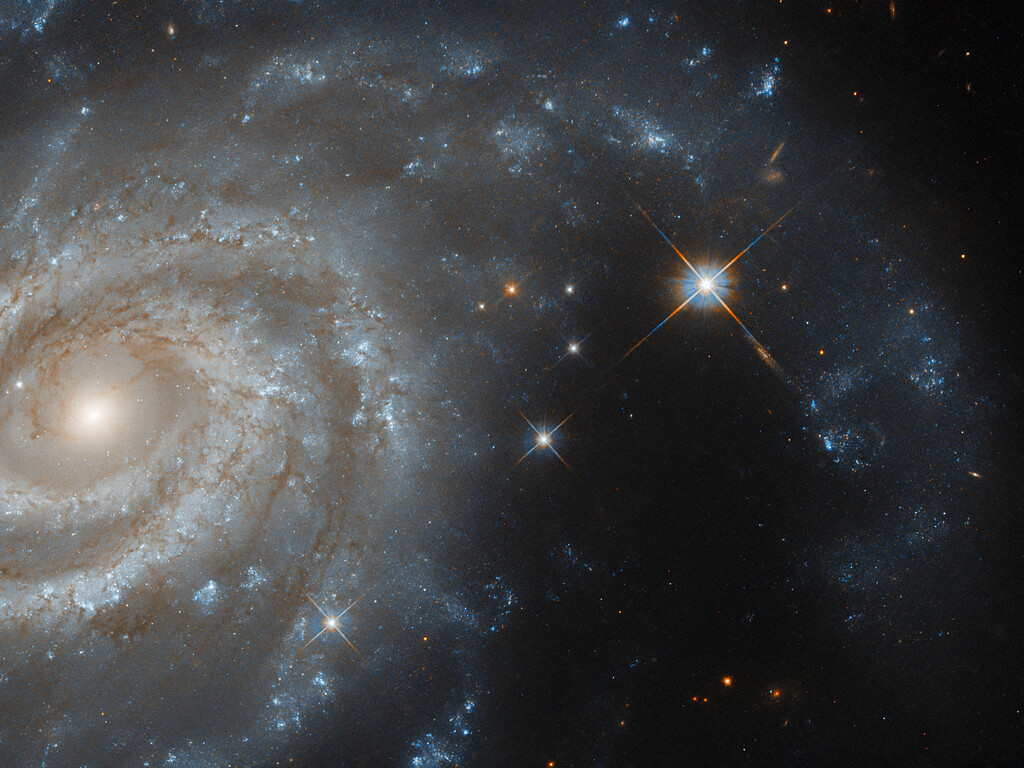Hubble telescope examines spiral galaxy IC 438: Check out this breathtaking image

The large spiral galaxy seen close-up in this image from the NASA/ESA Hubble Space Telescope is IC 438. A big bright star is also visible inside the arc of the galaxy's arm.
IC 438 lies about 130 million light-years from Earth in the constellation Lepus (the Hare). Lepus, one of the 88 constellations that are officially recognised by the International Astronomical Union (IAU), is flanked by the constellations Canis Major (the Greater Dog) and Orion (the Hunter), with the Canis Minor (the Lesser Dog) lying very nearby.
Hubble examined spiral galaxy IC 438 to study a type Iax supernova, a kind of supernova that arises from a binary system of two stars, that took place in 2017. This data was acquired over three years after the supernova occurred, so it’s not visible in this image.
📷 The NASA/ESA @HUBBLE_space Telescope has captured an image of the spiral galaxy IC 438.Hubble started studying this galaxy after type Iax supernova took place in 2017, a kind of supernova that arises from two stars combining.🔗 https://t.co/KZRgjrLQ4K pic.twitter.com/7WIi5oP5Sn
— ESA (@esa) January 22, 2024
Since its launch in 1990, the Hubble Space Telescope has been a stalwart sentinel of the cosmos, providing breathtaking images and invaluable scientific data for over three decades. The premium space-based observatory has revolutionized our understanding of the universe.
Equipped with a suite of advanced scientific instruments, Hubble has captured stunning images of distant galaxies, nebulae, and celestial phenomena, offering unprecedented clarity and detail. Its observations have been instrumental in determining the universe's expansion rate and understanding dark matter and dark energy.
Over the years, Hubble has undergone several servicing missions to upgrade its instruments and extend its operational life.
- READ MORE ON:
- spiral galaxy IC 438
- Hubble Space Telescope










